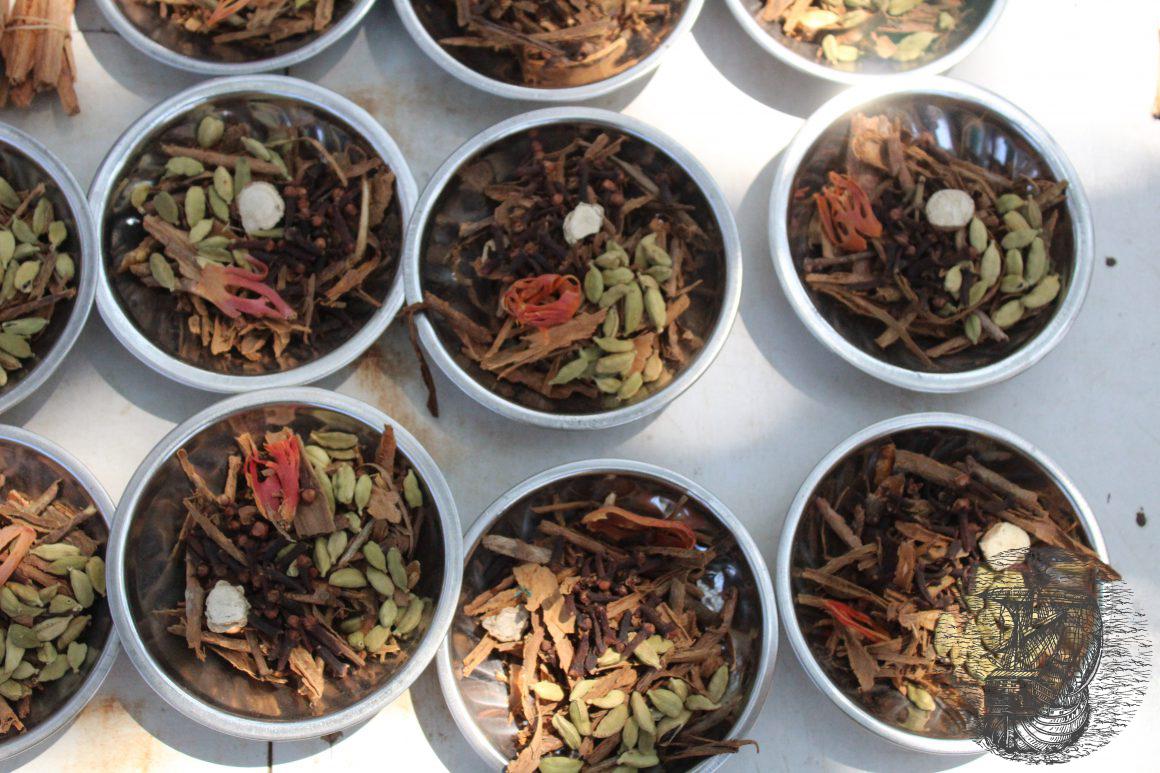
Curry-mixtures – the aromatic spice mix
Actually, the spice mixture that we call curry in Europe, is not called curry in India
But simply “Masala”, which means as much as mixture.
In Sri Lanka, however, the dish itself is called curry.
The already ground curry-mixtures were invented in England

After the English came into contact with Indian cuisine during the colonial period, they did not want to miss the spicy heat and invented curry without further ado. The name probably comes from “Kari”, which simply means “sauce” in Tamil.
Originally, curry “Kari” was a dish consisting of meat with a sauce. This was eaten with rice or bread.
In India, each family has its own recipe for the different mixtures
Moreover, they do not buy a ready-mixed powder, but many individual spices, which they then always freshly grind and mix together.

In different countries, the mixtures vary. In India, they are often yellow because a lot of turmeric is used. In Sri Lanka, however, they tend to be brown and the curry-mixtures for meat are roasted, making them darker. This gives the dish a slightly smoky flavor.
Curry is always a mixture of several different spices
So, 5 to 13 spices are mixed and mortared in different quantities.

Best known in Europe is the Curry Madras. It is considered THE classic mixture. But it does not always taste the same. Sometimes it’s spicier, sometimes it’s less spicy, depending on who mixed it.
Because curry is a mixture, there are an infinite number of different ones. There are also always new ones being created. For example, the Purple curry.
There are no limits to the spice-mix fantasy!
The curry herb, which can be found in many gardens nowadays, has nothing to do with curry and is not part of the mixture. It is called so because it smells like curry when you rub the herb between your fingers.

Foto von Hans Braxmeier auf Pixabay
On the other hand, “curry leaves” can be a component of the curry-mixtures. Especially in India and Sri-Lanka, these trees grow almost everywhere, and the leaves are added to dishes in large quantities. They are cooked along, so that they give off flavor.

In Europe, these leaves are unfortunately very difficult to obtain and if you do find them, then only dried.
I have had a curry leaves plant for several years. It thrives well in the garden during summer, but in winter, it loses all its leaves every year, so each time I worry thinking it will not recover. However, in the spring it sprouts again.

There are also curry varieties that were invented out of necessity
For example, the curry Colombo.
It was put together in the Caribbean by workers from Sri Lanka. Of course, with the spices they found there – et voilà – a new curry was created.
In general, a curry blend can contain the following spices – depending on the origin:
- Turmeric
- Coriander
- Cumin
- Pepper
- Fenugreek
- Fennel Seed
- Mustard
- Garlic
- Dill
- Chili
- Poppy Seed
- Chickpea Flour
- Paprika
- Cinnamon
- Ginger
- Spice Cloves
- Sandalwood
- Lemongrass
- Aniseed
The first five spices are the base, so to speak, and the other spices are mixed in with them in varying amounts. In this way, different variations are created.
By the way, in Thailand you will find the curry-mixtures mostly as a paste
This is mainly because in Thailand fresh ingredients are used instead of dried spices. For example, kaffir lime leaves, lemongrass, fresh galangal and fresh turmeric. Add to that onions and garlic. Here you can find a recipe for a vegetarian curry paste.
You can use curry-mixtures for almost everything
They go very well with rice or sauces. A bit of curry mixture in a pumpkin soup or even in tomato sauce gives these dishes a certain warmth. It also goes well, in small amounts, with salad, vegetables or legumes.
Certain curry blends go particularly well with coconut milk sauces, others go better with cream, and still others with yogurt sauces.
Curry is known all over the world and in different countries there are different curry dish classics
In Germany, for example, curry sausage is best known, and in Switzerland a curry sauce with fruits and rice, called Riz Casimir, is very popular.
Here is a small selection of available curry blends:
- Curry mild: usually contains a lot of turmeric, which also gives it its beautiful yellow color. Because it is mild, it is also suitable for children.
- Curry Colombo: is mostly medium hot, often with anise or fennel and therefore sweetish. It goes very well with fish, meat, and dishes with fruit.
- Curry Madras: is a typical Indian mixture, between medium and hot. Suitable for all dishes
- Curry hot: spicy to very spicy mixture from India. Curry Thai green: hot, but also lemony-fresh, with lemongrass and green pepper
- Curry Sri Lanka: warm, with lots of coriander seeds and cumin, a little smoky (only the roasted one for meat)
- Purple Curry: fresh, slightly sour, with ground hibiscus flowers in it. For fish/poultry or in bread. (Grissini). Beautiful color, thanks to the purple hibiscus flowers.
Then, of course, there are many, many more varieties. In India there is a saying that goes: There are as many spice mixtures as there are cooks.
What is your favorite dish with curry?




